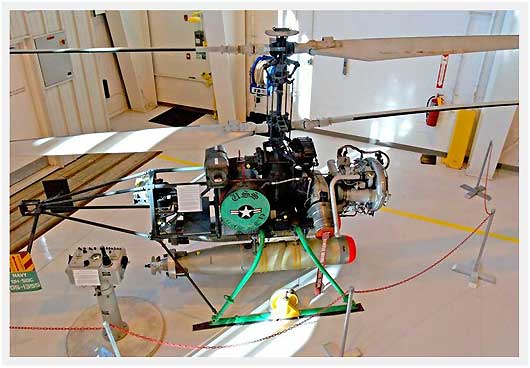Introduction
The Vietnam War started back in 1955. A lot of efforts were used to keep the communist portion of Vietnam at bay, but it proved to not be beneficial by the United States. During that time period, the United States struggle with jungle warfare and even instances in the ocean. At the time, the Soviet Union was still at large and there was the looming threat of submarines armed with nuclear weaponry. To try and counteract this potential threat, the U.S. developed the QH-50 Dash. It was the first unmanned rotorcraft. Figure 1 shows an image of the rotorcraft.
 |
| Figure 1: Above is the QH-50 Dash equipped with a missile. |
Methods
The main purpose of the rotorcraft was for anti-submarine patrols since it could be equipped with two missiles or a nuclear depth bomb. It was used to alleviate the need for pilots and to create a method of patrolling without the need of the person directly on the rotorcraft controlling it. Along with that, the aircraft was also smaller in size compared to others in the 1960's. The rotor diameter was twenty feet with a height of a little over nine and a half feet. It was also used for spotting naval fire within Vietnam, so it was adapted for other uses too. Other variations of the Dash model consisted of being equipped to carry gun and rocket systems.
Discussion
The use of the QH-50 Dash proved to be successful. Although the Cold War did not develop into a full out war, the rotorcraft had a moment to prove itself within the Vietnam War. The use of an unmanned rotorcraft was definitely a niche need, but when it was necessary, the QH-50 was a reliable way to get the job done. The rotorcraft was equipped with equipment that is closer to state-of-the-art comparing to the previous post about the B-17's that were controlled remotely. Even with the success of this rotorcraft, it still proved that the technology has more room for improvement.
Conclusion
The QH-50 Dash was a solution for a specific need, but it allowed for the United States to further their research within the unmanned industry. The use of this rotorcraft helped to further the industry and to learn from some of the applications of it. Even though any given system is not perfected, the unmanned system for the Dash was not either. The unmanned industry at the time had a long ways to grow to get to today's updated industry. Regardless, the QH-50 Dash was a feat and can be used as a landmark to further the industry even today.
References
1960's Coaxial (Drone Anti-Submarine Helicopter) - Gyrodyne QH-50 - blog. (n.d.).
Retrieved April 20, 2020, from
http://airpigz.com/blog/2010/11/19/1960s-coaxial-drone-anti-submarine-helicopter-
gyrodyne-qh-50.html
Gyrodyne QH-50C Drone Anti-Submarine Helicopter (DASH). (2010, November 19).
Retrieved April 20, 2020, from
https://airandspace.si.edu/collection-objects/gyrodyne-qh-50c-drone-anti-submarine-
helicopter-dash/nasm_A20090023000
Comments
Post a Comment